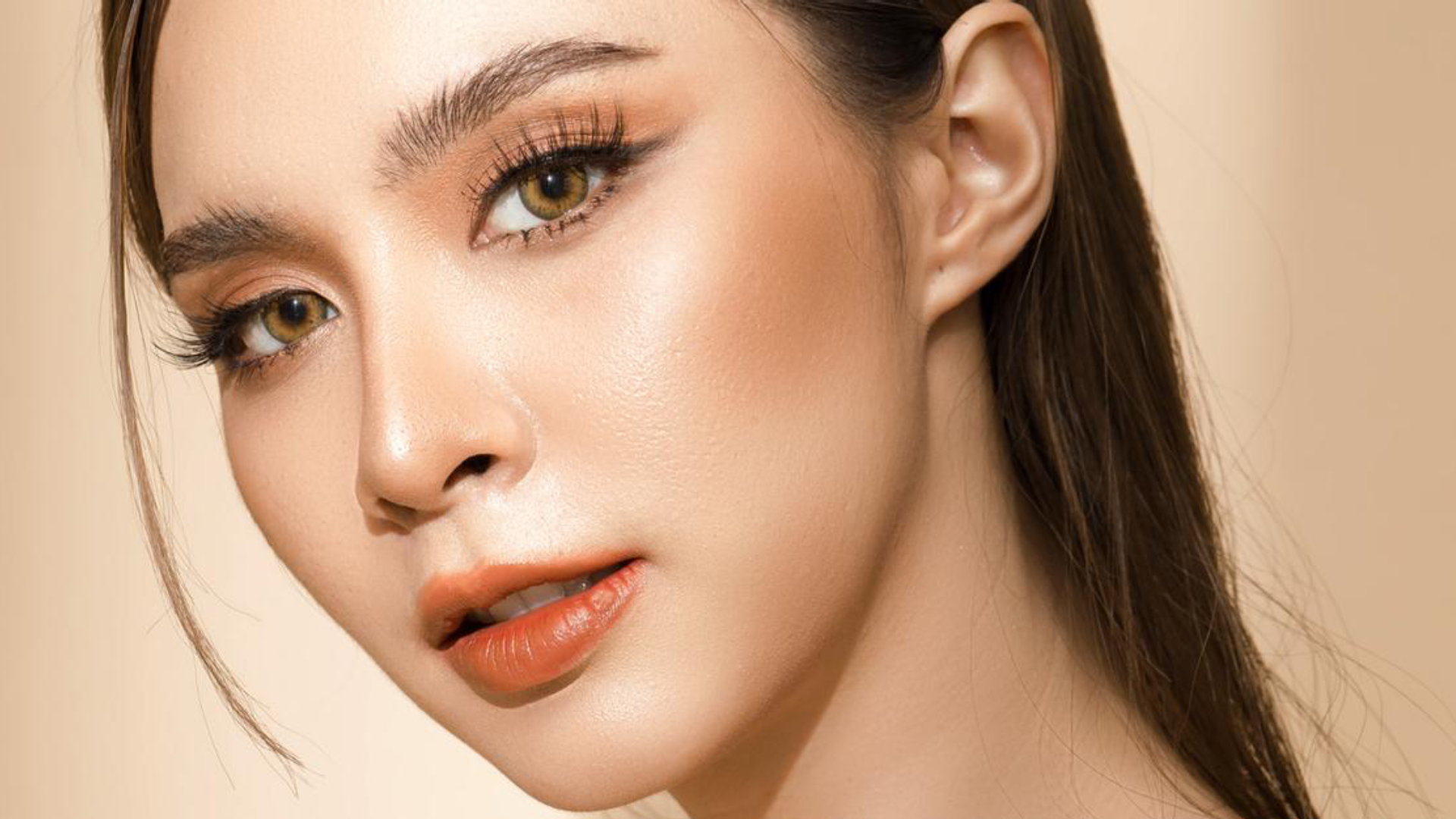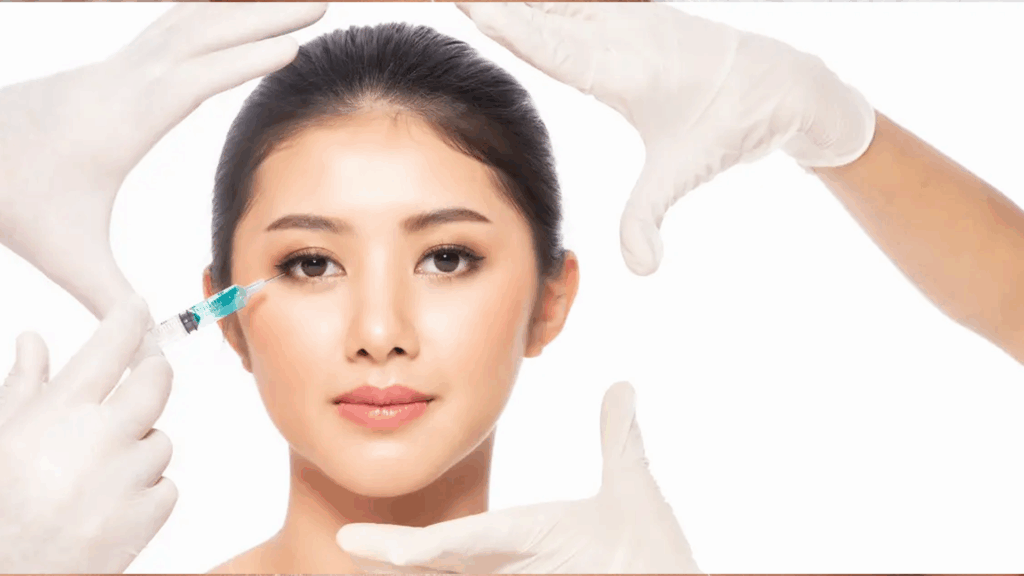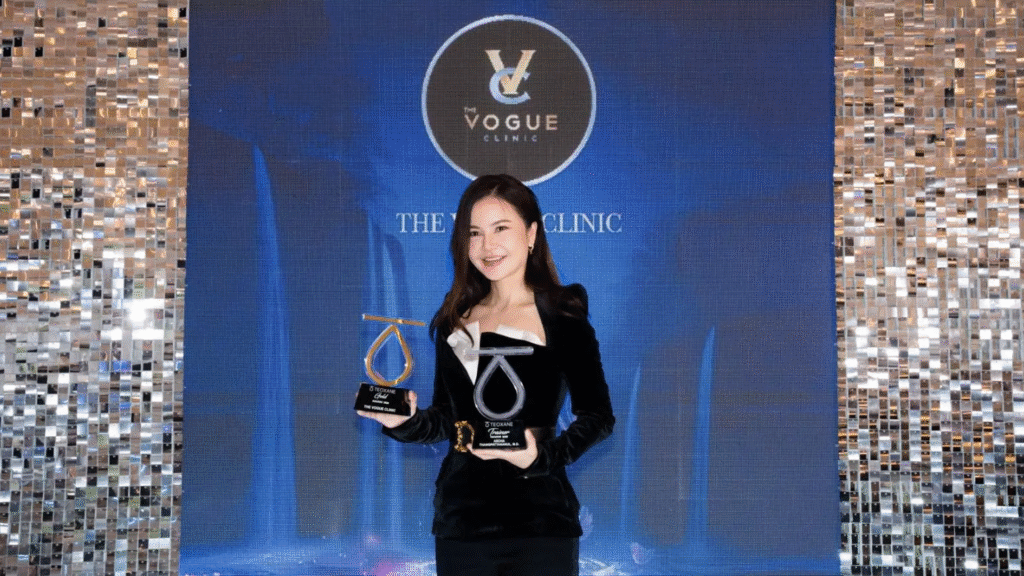يُعرف الدوريان على نطاق واسع بلقب "ملك الفواكه" ويحظى بشعبية كبيرة في جميع أنحاء البلاد. بنكهته الحلوة والغنية والمغرية، أصبح المفضل لدى الكثيرين.
وهذا ما يدفع بعض عشاق الدوريان للتساؤل: “همم... هل يمكنني تناول الدوريان بعد إجراء عملية تجميل الأنف؟” نحن هنا اليوم لنوضح لكم الإجابة على هذا السؤال!
من الناحية الطبية، لا توجد حالياً أبحاث تؤكد تأثير تناول الدوريان بعد الجراحة التجميلية.
ومع ذلك، ولأسباب تتعلق بالسلامة، من الأفضل تجنب تناول الدوريان خلال فترة التعافي الأولية.
انتظر حتى يلتئم الجرح تمامًا — لمدة لا تقل عن شهر — قبل الاستمتاع بتناول الدوريان مرة أخرى لتجنب أي مضاعفات محتملة.
السبب في ذلك هو أن بعض المرضى بعد إجراء عملية تجميل الأنف يشعرون برغبة شديدة في تناول الدوريان.
لا يستطيعون مقاومة هذه الرغبة، ويقررون تناوله على أي حال!
ومن هنا جاء هذا القول: "لذيذ في الفم، مزعج للطبيب."
وقد تشمل العواقب بطء التئام الجرح الجراحي، وعدم انغلاق الجرح بشكل صحيح، والأهم من ذلك أن الجرح قد يصبح أكثر عرضة للعدوى. وفي بعض الحالات، قد يُصاب المريض بندبات بارزة أو كيلودية.
لذا، إذا كنت لا ترغب في أي مضاعفات، فعلى المرضى التحلي بالصبر والانتظار حتى يلتئم الجرح بشكل كامل.
والأهم من ذلك، يجب عليك استشارة طبيبك بعناية بشأن أي قي
فهرس المحتويات
- ما يجب تجنبه بعد جراحة الأنف
- ماذا يمكنك أن تأكل بعد عملية تجميل الأنف؟
- ما هي عملية تجميل الأنف؟
- جراحة الأنف بالسيليكون (جراحة الأنف)
- من يناسبه عملية تجميل الأنف؟
- فوائد عملية تجميل الأنف بالسيليكون (تجميل الأنف المغلق)
- توصيات للراغبين في إجراء عملية تجميل الأنف
- خطوات عملية تجميل الأنف
- الاحتياطات قبل عملية تجميل الأنف
- كيفية الاستعداد لعملية تجميل الأنف
- نصائح للعناية الذاتية والرعاية بعد الجراحة
- Where to Get Rhinoplasty? Why Choose The Vogue Clinic? What to Consider?
ما يجب تجنب تناوله بعد عملية تجميل الأنف
- الأطعمة التي يجب تجنبها بعد عملية تجميل الأنف
- الأطعمة الحارة: يمكن للأطعمة الحارة أن تسبب زيادة في إنتاج المخاط، والذي قد يدخل إلى موقع الجراحة ويسبب التهابًا وزيادة في خطر الإصابة بالعدوى.
- الأطعمة المخمرة: يجب تجنب جميع أنواع الأطعمة المخمرة، مثل السمك المخمر (مثل بلا را)، والكيمتشي، والخضروات المخللة، والفجل المخلل، بسبب خطر الإصابة بالعدوى.
- الأطعمة غير المطهية أو غير المطهية جيدًا: يجب تجنب الأطباق النيئة مثل الساشيمي أو الجمبري المنقوع في صلصة السمك لأنها قد تحتوي على بكتيريا قد تسبب التهابًا وتبطئ عملية الشفاء.
- السجائر والمشروبات الكحولية: يجب تجنب التدخين وتناول المشروبات الكحولية خلال أول 7-14 يومًا بعد الجراحة، لأنها تزيد من خطر الإصابة بالعدوى وتعيق عملية الشفاء.
- المأكولات البحرية: يمكن للمأكولات البحرية أن تسبب ردود فعل تحسسية بسهولة، لذا من الأفضل تجنبها خلال أول 7-14 يومًا من فترة التعافي.
- الأطعمة المالحة: يمكن للأطعمة المالحة أن تسبب احتباس الماء، مما يؤدي إلى التورم في الوجه أو حول موقع الجراحة. من الأفضل تجنبها لفترة من الوقت.
- الفيتامينات والمكملات الغذائية: تجنب تناول فيتامين E، والجينكو بيلوبا، والجينسنغ، وزيت السمك، وبعض أدوية حب الشباب، لأنها قد تؤثر على تخثر الدم وتبطئ عملية الشفاء. إذا كنت تتناول أدوية بانتظام، استشر طبيبك قبل الجراحة.
- القهوة: يُنصح بتجنب المشروبات التي تحتوي على الكافيين في مرحلة التعافي الأولى لضمان نوم أفضل والسماح للجسم بالشفاء بشكل صحيح، مما يساعد على تسريع عملية التئام الجرح.
- السمك المخمر (بلا را): السمك المخمر مثل بلا را هو نوع من الأطعمة المخمرة التي يجب تجنبها. يمكن لهذه الأطعمة أن تُدخل بكتيريا قد تؤدي إلى العدوى بسبب سوء النظافة. بالإضافة إلى ذلك، قد تسبب تورمًا، واحتقان الأنف، أو سيلان الأنف، لذا من الأفضل تجنبها لمدة لا تقل عن شهر واحد.
ماذا يمكنك أن تأكل بعد عملية تجميل الأنف؟
- ماء جوز الهند: يساعد ماء جوز الهند في تقليل التورم حول الأنف بعد الجراحة ويعزز من سرعة شفاء الجرح.
- الفواكه: تحتوي الفواكه على الفيتامينات التي تساعد في تعافي الجسم ومكافحة الجذور الحرة، مما يسرع عملية الشفاء.
- البروتينات: تناول البروتينات، وخاصة من البيض، يساعد في إصلاح الأنسجة التالفة ويسرع من شفاء الجروح. كما تسهم الأطعمة الغنية بالبروتين مثل اللحوم في تسريع التعافي. ومع ذلك، يجب تناولها باعتدال لتجنب خطر تكوّن الندبات الكيلويدية.
- الماء: شرب كمية كافية من الماء، لا تقل عن 6-8 أكواب يوميًا، يساعد في تقليل التورم، ويساعد على شفاء الجروح، ويحافظ على ترطيب البشرة، مما يمنع الجفاف والانزعاج حول موقع الجراحة.
- الأطعمة الغنية بالحديد: تساعد الأطعمة الغنية بالحديد، مثل لحوم الأعضاء والمأكولات البحرية، في شفاء الجروح وتسريع عملية التعافي.
- البيض: يعتقد الكثير من الناس خطأً أن البيض يبطئ الشفاء، لكنه في الواقع يساعد في شفاء الجروح. البروتين الموجود في البيض يساعد في إصلاح الأنسجة ويسرع عملية التعافي. من الأفضل تناول بيضة واحدة فقط يوميًا.
- الدجاج: يمكنك تناول الدجاج بعد عملية تجميل الأنف لأنه يساعد في بناء وإصلاح الأنسجة. ومع ذلك، في الأيام الأولى عندما يكون الجرح لا يزال حديثًا، يجب تناوله باعتدال لتجنب تحميل الجسم كميات زائدة من البروتين، مما قد يؤثر سلبًا.
- الأعشاب البحرية: لمن يحب تناول الأعشاب البحرية، فهي خيار ممتاز بعد عملية تجميل الأنف. غنية بالمعادن والألياف والحديد، تساعد الأعشاب البحرية في تنظيم درجة حرارة الجسم وتقليل التورم والكدمات، مما يجعلها طعامًا مثاليًا بعد الجراحة.
عندما يتعلق الأمر بجراحات الوجه، تعد عملية تجميل الأنف واحدة من أكثر الإجراءات شعبية ولا تزال تزداد شهرة. وذلك لأن الأنف هو مركز الوجه، وعند تحسينه يتغير المظهر العام بشكل كبير. تُعتبر عملية تجميل الأنف إجراءً جراحيًا يُستخدم عادةً لتصحيح المشاكل الهيكلية في الأنف، وقد أصبحت شائعة جدًا في السنوات الأخيرة. يختار الكثيرون هذا الإجراء عندما يكون شكل أنفهم غير متناسق، أو يفتقر إلى الأبعاد، أو تكون نسبه غير متوافقة عند قياسها من الجبهة، وقمة الأنف، والذقن. يجب أن تكون هذه المناطق الثلاث متوازنة للحصول على مظهر وجه متناغم.
عملية تجميل الأنف لا تُجرى لأغراض تجميلية فقط، بل تُستخدم أيضًا لإصلاح تشوهات الأنف، والأضرار الناتجة عن الحوادث، ومشاكل التنفس، أو المشاكل الخلقية.
ما هي عملية تجميل الأنف؟
تشمل عملية تجميل الأنف إجراء شقوق على حواف فتحتي الأنف، وذلك حسب خبرة الجراح، لتعديل الهيكل الداخلي للأنف. قد تتضمن الإجراءات إزالة النتوء (التنعيم) وزرع غرسة من السيليكون على طول خطوط الشق. يمكن استخدام السيليكون فقط، أو إضافة تقنية تتضمن استخدام غضروف من خلف الأذن لتعزيز طرف الأنف.
في تقنية تجميل الأنف نصف المفتوحة، لا يتمكن الجراح من رؤية الهيكل الأنفي بالكامل، مما يجعلها مناسبة للمرضى الذين يعانون من مشاكل هيكلية بسيطة في الأنف أو لأولئك الذين لديهم بالفعل شكل أنف جيد ويرغبون في تحقيق مظهر أنفي أكثر بروزًا وتعريفًا.
تجميل الأنف باستخدام السيليكون (جراحة الأنف)
عند التفكير في جراحة التجميل، يفكر الكثير من الناس فورًا في تجميل الأنف لأن الأنف هو نقطة مركزية في الوجه. لا تقتصر عملية تجميل الأنف على تحسين مظهر الوجه بإضافة الأبعاد فقط، بل تعمل أيضًا على تحسين الفينغ شوي (حظ الوجه)، وتعزيز الشخصية، وزيادة الثقة بالنفس. يتم تصميم العملية بشكل مخصص ليناسب نسب الوجه لتحقيق نتيجة جمالية شاملة.
من حيث السلامة والجمال، تتضمن تجميل الأنف بالسيليكون (تجميل الأنف المغلق) إجراءً جراحيًا حيث يقوم الجراح بوضع غرسة السيليكون على طول خطوط الشق. يكون الشق صغيرًا ويتم إجراؤه داخل فتحتي الأنف. يتم وضع السيليكون فوق الغضروف وتحت الغطاء العظمي في الجزء الصلب من الأنف. تعتبر هذه التقنية بسيطة نسبيًا وسريعة، وتتطلب وقتًا أقل لإجراء العملية.
من يناسبه عملية تجميل الأنف؟
- الأشخاص الذين لديهم هيكل أنف منحرف قليلاً: بالنسبة لأولئك الذين يعانون من ميل بسيط أو عدم تماثل في الأنف، يمكن لتجميل الأنف أن يساعد في تحسين مظهره.
- حالات تجميل أنف جديدة تحتاج إلى تعزيز جسر الأنف وطرفه باستخدام السيليكون: الأشخاص الذين يرغبون في تحسين كل من جسر الأنف وطرفه مع التركيز الأساسي على استخدام غرسات السيليكون.
- الأشخاص الذين خضعوا لتجميل الأنف سابقًا ويواجهون مشكلات: بالنسبة لأولئك الذين يعانون من مضاعفات بعد عملية تجميل الأنف السابقة، مثل رقة طرف الأنف، تمزق السيليكون، أو غرسة غير متساوية أو مائلة.
- الأشخاص الذين لديهم أنف ليس قصيرًا جدًا، أو طرف أنف أصغر نسبيًا أو جسر أنف ضيق: قد تكون عملية تجميل الأنف مناسبة لأولئك الذين لا يكون هيكل أنفهم كبيرًا أو عريضًا للغاية، حيث يمكنها المساعدة في تحسين التوازن والتناظر.
مميزات تجميل الأنف بالسيليكون (تجميل الأنف المغلق)
تجميل الأنف المغلق مناسب للمرضى الذين لديهم بالفعل شكل أنف جيد نسبيًا. تعمل هذه التقنية بشكل جيد لأولئك الذين لديهم قاعدة أنف ضيقة، وجسر أنف متناسق بشكل معقول، ولا يعانون من عدم تماثل كبير في الأنف. كما أنها مثالية للأشخاص الذين يمتلكون أنفًا ليس طويلًا جدًا ولا قصيرًا جدًا. إذا كان الأنف متناسقًا، يمكن لتجميل الأنف بالسيليكون تحسين مظهره. ومع ذلك، هذه الطريقة غير مناسبة لمن لديهم أنف قصير جدًا، لأنها لا تستطيع معالجة طول الأنف بشكل فعال. بالإضافة إلى ذلك، تجميل الأنف المغلق له حدود في إجراء التعديلات الهيكلية، حيث تتم العملية عبر شقوق داخل فتحتي الأنف فقط، مما يعني أنه لا يمكن تصحيح المشاكل الهيكلية الكبيرة أو إعادة تشكيل الإطار الكامل للأنف.
توصيات لمن يرغبون في الخضوع لعملية تجميل الأنف
في عملية تجميل الأنف، الخطوة الأولى هي استشارة جراح مؤهل لتقييم كمية الأنسجة حول الأنف، وبنية الأنف، وبنية الوجه. سيقوم الجراح بتقييم هذه العوامل لضمان اختيار النهج الأنسب. بالإضافة إلى ذلك، يُنصح بأن يكون الأشخاص الذين يرغبون في تجميل الأنف لا يقل عمرهم عن 18 عامًا، حيث يستقر هيكل عظام الوجه عادةً في هذا العمر، مما يضمن أن النتائج لن تتأثر بأي تغييرات مستقبلية في بنية الوجه. ويُفضل أن يكون شكل الأنف الأكثر جمالًا هو الذي يتناسق مع وجهك ويبدو طبيعيًا.
تجميل الأنف لا يقتصر فقط على جعل الأنف أكثر بروزًا؛ بل يشمل أيضًا تصحيح بنية الوجه. لذلك، من المهم استشارة جراح لتقييم بنية الأنف، وأنسجة الأنف، والبنية العامة للوجه قبل الخضوع للعملية الجراحية. تساعد هذه التقييمات في تجنب المخاطر المحتملة في المستقبل، مثل شكل أنف غير جذاب، عدم التماثل، سوء المحاذاة، أو حتى بروز زرع السيليكون من خلال الجلد.
خطوات عملية تجميل الأنف
عادةً ما تستغرق عملية تجميل الأنف حوالي ساعة واحدة لأنها إجراء بسيط نسبيًا، ووقت التعافي من التخدير يكون قصيرًا. بمجرد زوال تأثير التخدير أو استيقاظ المريض، يمكنه العودة إلى المنزل. تتضمن العملية عادةً الخطوات التالية:
- سيقوم الجراح بحقن مخدر لضمان استرخاء المريض وراحته، بالإضافة إلى تخدير موضعي لتخدير المنطقة حول الأنف.
- سيقوم الجراح بعمل شق صغير، يبلغ حوالي 1 سم، عند طرف الأنف. وبحسب خبرة الجراح، قد يُجرى الشق من جهة واحدة أو من الجهتين.
- سيتم تعديل الهيكل الداخلي للأنف، بما في ذلك إجراءات مثل الكشط (إزالة النتوء أو الهيكل العظمي غير المستوي). بعد ذلك، يتم وضع غرسة السيليكون في موقع الجراحة.
- يتم وضع السيليكون بعناية، ثم تُخاط الشقوق وتُغلق عند حواف فتحتي الأنف.
- يتم وضع جبيرة أو قالب أنفي لتقليل التأثير، وحماية الأنف من التعرض المباشر للماء، والحفاظ على شكل الأنف الجديد، والمساعدة في شفاء الأنف بشكل صحيح والحفاظ على شكله بسرعة أكبر.
مدة العملية الجراحية
حاليًا، تُعد جراحة تجميل الأنف عملية بسيطة نسبيًا تستغرق حوالي ساعة واحدة وتُعتبر آمنة. يتم إجراؤها بواسطة أطباء ماهرين باستخدام تقنيات حديثة، مما يسمح بالحصول على أنف جميل وطبيعي يكمل ملامح الوجه. قبل الخضوع لجراحة تجميل الأنف، يجب على المرضى الامتناع عن التدخين وتناول الكحول لمدة لا تقل عن أسبوعين قبل الجراحة لتقليل خطر العدوى والتورم المطول. من المهم أيضًا إبلاغ الجراح بأي حساسية تجاه الأدوية أو وجود حالات طبية مزمنة.
الاحتياطات قبل عملية تجميل الأنف
- جراحة تجميل الأنف المغلقة تتضمن إجراء شقوق داخل الأنف. تتميز هذه العملية بأنها تستغرق وقتًا أقل وتركز على تحسين شكل الأنف، خصوصًا لجعله أكثر بروزًا.
- جراحة تجميل الأنف المفتوحة تتيح للجراح تحليل وتصحيح المشاكل العامة في الأنف، مثل تعديل جسر الأنف البارز بشكل مفرط.
- حتى وإن تم استخدام نفس نوع السيليكون، قد تختلف النتائج النهائية لجراحة تجميل الأنف بناءً على الطريقة المختارة، والشكل الأصلي للأنف، وخبرة الجراح.
- إذا كان هناك نسيج أنفي غير كافٍ أو رقيق، لا يُنصح بإجراء تجميل الأنف باستخدام السيليكون بسبب خطر بروز الغرسة عبر الجلد.
- من المهم استشارة خبير لتحديد ما إذا كان يجب إجراء تقليل حجم فتحتي الأنف أم لا.
- رفع طرف الأنف باستخدام نسيجك الخاص أو مادة صناعية يساعد في منع السليكون من ملامسة نسيج الأنف مباشرة، مما يمنح الطرف مظهراً أكثر طبيعية.
- هناك العديد من أشكال الأنف الشائعة اليوم. يمكنك إحضار صور مرجعية لاستشارة جراحك من أجل إجراء عملية مخططة جيدًا.
التحضير قبل جراحة الأنف
تجنب تناول أدوية مثل الأسبرين أو الإيبوبروفين لأنها قد تسبب تورمًا وكدمات نتيجة تراكم الدم بعد الجراحة. الصوم لمدة لا تقل عن 6 ساعات قبل الجراحة، مع الامتناع عن الطعام والشراب. تجنب تناول المكملات التي تؤثر على تدفق الدم، مثل الفيتامينات أو زيت السمك، لأنها قد تبطئ تجلط الدم (تطيل فترة النزيف) بعد الجراحة.
العناية بعد الجراحة بعد عملية تجميل الأنف
- رعاية بعد 48 ساعة من عملية تجميل الأنف
- "الكمادات الباردة:"
- Apply a cold compress with gel horizontally over your eyes and the bridge of your nose for the first 48 hours.
- Elevated Sleeping Position:
- Sleep with your head elevated for the first 3 days to help reduce swelling and ensure proper rest.
- Avoid Sleeping on Sides:
- Avoid sleeping on your left or right side to prevent the nose from becoming misaligned or skewed.
- Avoid Alcohol and Smoking:
- Do not drink alcoholic beverages or smoke, as both can slow down the healing process and increase the risk of complications.
- Avoid Spicy and Pickled Foods:
- Refrain from consuming spicy foods and pickled foods as they may increase irritation and swelling.
- Drink Herbal Teas:
- Drink water chestnut leaf tea and coconut water to help reduce swelling and bruising.
- Face Washing:
- Use a mild soap to wash your face starting from day 4 after surgery.
- Bruising:
- If bruising occurs, use warm compresses after day 6 to help alleviate it.
- Avoid Strenuous Activities:
- Refrain from physical activities such as exercise or lifting heavy objects.
- Medication:
- Take the prescribed medication as instructed by your doctor.
- Follow-Up Appointment:
أين أفضل مكان لإجراء جراحة الأنف؟ لماذا تُعد عيادة فوغ خيارًا جيدًا؟ ما الذي يجب مراعاته؟
إذا كنت من الأشخاص الذين يرغبون في أن يكون لديهم أنف بارز ومناسب لوجههم، وما زلت غير متأكد من مكان إجراء جراحة الأنف لتحقيق النتائج المرجوة، فهذا الموضوع مخصص لك. ومع ذلك، يجب ألا تُترك الجمال للصدفة أو المخاطرة. لذلك، في هذا القسم، سنقدم لك معلومات حول كيفية اختيار معهد تجميل موثوق به.
- خبرة الطبيب
العامل الأول الذي يجب أخذه في الاعتبار هو الطبيب الذي سيُجري العملية. يمكنك تقييم عمل الطبيب من خلال الاطلاع على تقييمات المرضى الحقيقيين، خبرة الطبيب، الشهادات الطبية، والاستشارة المقدمة. فائدة استشارة الطبيب مباشرة هي أنك ستفهم الإجراءات ومصداقية الطبيب. الأطباء ذوو الخبرة يستطيعون تقديم نصائح دقيقة ومفصلة. - سمعة العيادة
اختر عيادة ذات سمعة طيبة، تلتزم بالمعايير، ولديها فريق طبي مدرب جيدًا. بالإضافة إلى ذلك، يجب أن تكون جميع المعدات الطبية المستخدمة في الإجراءات نظيفة ومعقمة. - الأدوات الجراحية
لضمان سلامة عملية تجميل الأنف ومنع حدوث مضاعفات، من المهم البحث عن معايير العيادة، بما في ذلك نظافة وتعقيم المعدات المستخدمة، وكذلك ما إذا كانت العيادة تستخدم أدوات حديثة. - مراجعات من عملاء حقيقيين، التسعير والعروض الترويجية
قد يؤدي اختيار عيادة تجميل بناءً على الأسعار المنخفضة فقط إلى نتائج غير مرضية أو حتى مضاعفات. قبل اتخاذ قرار بشأن إجراء عملية تجميل الأنف، من الضروري مراجعة تعليقات العملاء الحقيقيين والاستفسار عن الأسعار والعروض الترويجية لاتخاذ قرار مستنير وتقليل المخاطر المستقبلية.
في عيادة The VOGUE في تشونبوري، يقودنا فريق من الأطباء ذوي المهارات العالية والخبرة الواسعة، مجهزين بأدوات حديثة ونظيفة ومعقمة. كما نقدم تقنيات حصرية لعملية تجميل الأنف لا تتوفر إلا في عيادتنا. ومع العديد من المراجعات من مرضى حقيقيين، يمكنك أن تطمئن إلى أنك ستحصل على نتائج جميلة مع أعلى مستوى من الأمان.
مميزات عملية تجميل الأنف في عيادة The VOGUE:
- يتم نحت السيليكون بشكل مخصص لكل حالة ليتناسب مع نسب وأنف الفرد بدقة.
- تم تصميمها لتكمل ملامح الوجه بشكل عام.
- يتم وضع السيليكون تحت غشاء العظم لتقليل المشكلات مثل الميلان، والانحراف، وتحرك السيليكون.
- تعافي أسرع مع تورم وكدمات أقل، بفضل التقنية الخاصة التي تقلل من التورم والكدمات بعد العملية في عيادة The VOGUE.





